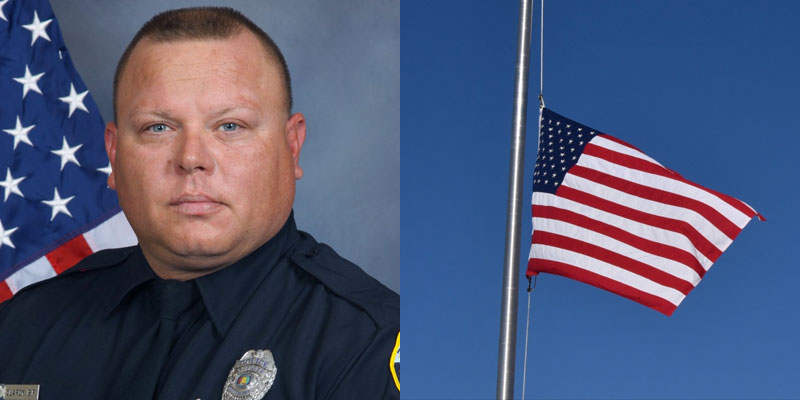“Justice has been served.”
At 8:25 p.m. Thursday, Kenneth Eugene Smith was pronounced dead after his execution in the murder-for-hire slaying of Elizabeth Sennett nearly 35 years ago. Alabama Attorney General Steve Marshall cleared the execution to start at 7:56 p.m. in the William C. Holman Correctional Facility in Atmore, his office said.
“Justice has been served,” Marshall said in a statement. “Tonight, Kenneth Smith was put to death for the heinous act he committed over 35 years ago: the murder-for-hire slaying of Elizabeth Sennett, an innocent woman who was by all accounts a godly wife, a loving mother and grandmother, and a beloved pillar of her community.
“I ask the people of Alabama to join me in praying for Elizabeth’s family and friends, that they might now better be able to find long-awaited peace and closure.”
Smith’s execution was the first time in the nation – and the world – that nitrogen hypoxia was used as the method of execution.
“The law authorizing the execution method was enacted in 2018 and was intended to be —and has now proved to be — an effective and humane method of execution,” Marshall said.
“On March 18, 1988, 45-year-old Elizabeth Sennett’s life was brutally taken from her by Kenneth Eugene Smith,” Gov. Kay Ivey said in a statement. “After more than 30 years and attempt after attempt to game the system, Mr. Smith has answered for his horrendous crimes. The execution was lawfully carried out by nitrogen hypoxia, the method previously requested by Mr. Smith as an alternative to lethal injection. At long last, Mr. Smith got what he asked for, and this case can finally be put to rest.”
“I pray that Elizabeth Sennett’s family can receive closure after all these years dealing with that great loss.”
Smith was tried for his crimes in 1989 and again in 1996. In both trials, Smith was convicted of capital murder and sentenced to death, Marshall’s office said.
“This is an important night for Liz Sennett’s family, for justice, and for the rule of law in our great nation,” Marshall said.
Summary of the Facts of the Case
Early on a cold and cloudy Friday morning, Kenneth Smith woke up, dressed himself, and hit the road. He had agreed to do a job that day, and was eager to earn the blood money he would be paid to do it: to murder an innocent and unsuspecting woman in her own home.
In March 1988, Charles Sennett, the pastor of the Westside Church of Christ in Sheffield, sought to hire a hitman. Reverend Sennett, who had incurred substantial debts and was having an extramarital affair, had taken out a large insurance policy on his wife. His scheme was to have his wife murdered, which would enable him — in one cowardly fell swoop — to escape both his financial obligations and his marital vows.
Smith’s crime was not impulsive or spontaneous, but carefully planned and cold-bloodedly deceptive. Through an intermediary, Reverend Sennett hired Kenny Smith and Smith’s friend, John Parker, for $1,000 each to conduct the murder. He also gave the men cash to purchase a firearm for “the job,” but they opted to use a far more cruel and painful weapon for the slaying — a six-inch survival knife — and use the money instead to buy drugs.
On the day of the murder, Smith and Parker drove to the Sennett home in Colbert County, with Smith sharpening the survival knife as they traveled. Reverend Sennett had assured Smith that his home would prove a perfect location for the murder because “the house was out in the country,” “[his wife] would be at home [by herself],” and “they never had any visitors.”
Smith parked his car at the back of the Sennett home and knocked on the door, lying to Elizabeth that he and his friend were interested in hunting on the property and wished to look around the grounds. After spending some time outside, Smith again knocked on the door and lied to Elizabeth, telling her the men needed to use her bathroom, which she graciously allowed.
Inside the house, Elizabeth was ambushed, violently punched, beaten, and bludgeoned, and stabbed over and over again with the six-inch survival knife that Smith and Parker had brought with them. After the crime, two witnesses described how Smith’s hands were “puffed up” or “wrapped and bruised,” evidence that suggested that he had struck many of the blows inflicted on Elizabeth. In addition to countless lacerations and abrasions that she sustained to her body, Elizabeth suffered a total of ten stab wounds — eight to her chest and two to her neck — which proved fatal. Elizabeth’s face was harmed so terribly during the attack that an emergency medical technician at the crime scene, who was a close friend of the Sennett family, commented that he would have never recognized her if he did not already know the identity of the victim.













